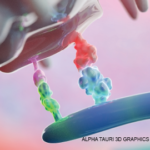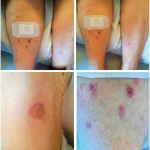The primary malignancies were melanoma (n=10), pulmonary (n=2) and hematologic (n=2). Fifteen patients (94%) had metastatic or stage IV cancers, and one was diagnosed with stage II non-Hodgkin’s lymphoma. ICIs were offered only following the failure of several chemotherapies.
“RD patients already have an overactive immune system that is attacking the body,” says Dr. Thanarajasingam. “Because of how the ICIs work, the immunologic concern for those with RD was, would [the ICIs] cause their diseases to go wild?”
ICIs Can Induce Autoimmune Side Effects
Immunotherapy can induce autoimmune side effects in almost any organ system in the body. In this context, they are collectively called immune-related adverse effects (IRAE). Six patients had IRAEs, with colitis being the most common (n=3). Only a single patient presented with a flare of their RD. Everyone was treated successfully with glucocorticoids and stopping the ICI. No patients in the cohort were rechallenged with the same immunotherapy medication, and only one was switched to an alternate ICI.
“This study adds further support to the emerging notion that the rate of IRAEs is not necessarily higher in this group compared to the general population,” wrote Dr. Thanarajasingam in the A&R article. “Of our cohort of 16 patients, only six (38%) had an IRAE or flare of their rheumatic disease. Of these events, two were graded as mild, and all six patients responded well to glucocorticoids.”
In addition, the researchers found no associations between DMARD use before or after the cancer therapy and the risk of developing adverse effects. Those who experienced IREAs tended to survive longer than those who did not (median survival 17 months vs. 1.4 months respectively; P=0.003). They were, however, unable to assess the impact of RD activity on either survival or the risk for IREA development. This is related to a small number of people in the cohort and the heterogeneity of their treatments and underlying malignancy.
“What we saw in most of these patients is that their rheumatic diseases were relatively quiet,” she says. “They were on low doses of glucocorticoids, and only a minority were on additional immunosuppression. This suggests to us that a patient whose RD is well controlled when the ICIs are needed for their cancer are probably those who fare the best.”
Limits Noted
Dr. Thanarajasingam notes that the study had some limitations that should be taken into account. Two important ones are its retrospective nature and small sample size. The size concerns can be explained by what is likely an under-reporting of IRAEs related to the reporting system not having the granularity needed to look for flares of rheumatic disease.



